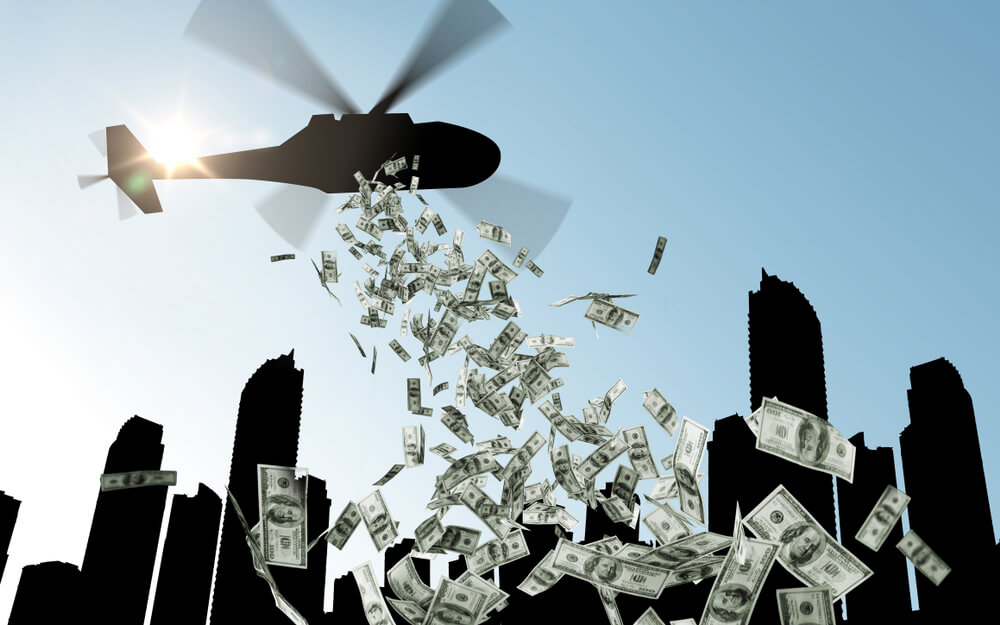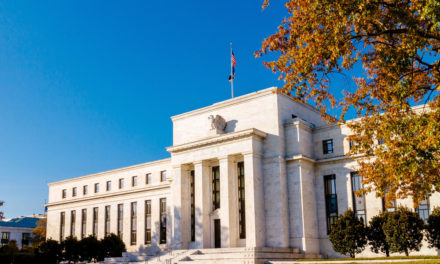Modern Monetary Theory has languished in obscurity for decades, but according to billionaire investor extraordinaire Ray Dalio, MMT or something even more radical will someday replace central banks across the world.
MMT is a philosophy that says governments should manage their economies through spending and taxes — not through interest rates set by a central bank. It also nearly wipes out fears of a growing national debt because a government that borrows in its own currency can always print more money (what could go wrong?) as long as inflation is low, much like it is now in the U.S.
Heavyweights in the financial world are largely opposed to it, including Fed Chair Jerome Powell. While not endorsing the new policies himself, Dalio, the founder of the largest hedge fund in the world, Bridgewater Associates, says policymakers like Powell will have little choice but to go with the flow.
Dalio wrote in a recent post on LinkedIn called “It’s Time to Look More Carefully at ‘Monetary Policy 3 (MP3)’ and ‘Modern Monetary Theory (MMT)'” that the new challenge for central banks will be to “produce economic well-being for most people when monetary policy does not work.”
With central banks seemingly tipping the scale, Dalio says, income inequality has steadily been on the rise in most developed countries around the world.
Cutting rates and buying securities to pump new money into the economy, or quantitative easing (QE), has nearly exhausted what the Fed can do in the U.S. to stimulate the economy again if there’s another recession soon.
The next step, Dalio says, is it will likely be replaced by third-generation monetary policy he’s dubbed MP3. It involves “fiscal and monetary policy coordination” along the lines suggested by MMT acolytes like Rep. Alexandria Ocasio-Cortez, D-N.Y.

The shift is already underway, Dalio says, with interest rates still near zero in Japan and the EU, and rates likely to fall back to zero in the U.S. as soon as the economy falters again, which is inevitable.
Budget deficits skyrocketed after the 2008 financial crisis and, while the economy is reportedly great right now under President Donald Trump, deficits are still rising — and the president is even outright calling for more QE, a strange request during good times that hints at the economy not being in nearly as great of shape as we’ve been led to believe.
China is adding great stimulus to its economy while at the same time keeping interest rates low. Our Federal Reserve has incessantly lifted interest rates, even though inflation is very low, and instituted a very big dose of quantitative tightening. We have the potential to go…
— Donald J. Trump (@realDonaldTrump) April 30, 2019
Do we have the strongest economy ever, in which case higher interest rates would be appropriate, or is the economy so weak that the Fed needs to prop it up with even lower interest rates and QE? You can't have it both ways!
— Peter Schiff (@PeterSchiff) April 30, 2019
According to Dalio, the bond-market response supports MMT arguments, as yields on government debt haven’t risen much, even though there’s a lot more debt.
Dalio says Japan has been doing this with large deficits for 20 years now and it can still borrow money virtually interest free.
While not endorsing these policies, Dalio gives examples of how they could evolve. For example, a central bank could print money to directly finance government programs (like a border wall?) and bypass the need to sell bonds.
A government could buy land “which would then ideally be used for socially beneficial ends” Dalio wrote. It could also simply write off debts hanging over a government and deliver cash directly to the public via stimulus checks known as “helicopter money” during downturns (remember those rebate checks we got from George W. Bush?).
Of course, there are major risks such as putting the power to create money directly in the hands of politicians (yikes, perish the thought).
“It’s difficult to imagine how the system will be built to achieve that,” Dalio wrote. “At the same time it is inevitable that we are headed in this direction.”
Dalio’s piece is well thought out, extensively researched and filled with information, charts and graphs. Click here to read it in full, and share your thoughts here in the comments below.




